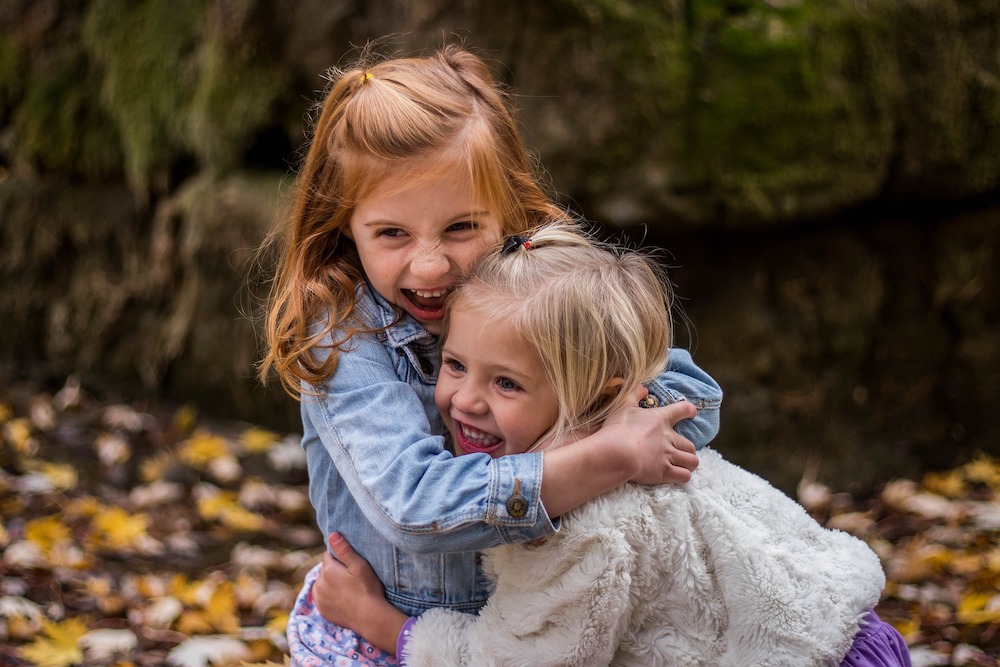Small but powerful steps to build a sense of gratitude
Published on Tuesday, 24 March 2020
Last updated on Thursday, 19 March 2020

According to the Merriam-Webster Dictionary, gratitude is simply “the state of being grateful.” Taking it further, psychology.com defines gratitude as, “a human emotion that can be most simply defined as appreciation or acknowledgment of an altruistic act.”
Early childhood educators can use scaffolding to support a young child’s emerging gratefulness, by helping children understand their own feelings and thoughts, as well as those of others.
Why is this important? Gratitude carries with it an abundance of positive outcomes in social-emotional learning – and it plays a critical role in happiness and health. So, laying early foundations for young children to develop and practice these skills is important.
By creating opportunities throughout the day educators can give children the language for the array of emotions and thoughts they, and those around them, may feel and think. This can underpin their later development of gratitude.
Research tells us that ‘gratitude’ is not an inherent natural behaviour, rather it is a learned behaviour that takes practice through action. Gratitude is an emotion strongly linked to wellness and studies show it makes us feel better about ourselves, improves physical health and sleep and helps us feel more connected socially.
Teaching young children gratitude is important because instilling the sense of the gesture goes beyond good manners. So, while young children may not fully grasp the concept of gratitude it is preparing the foundations for them to learn and develop the capacity to take the perspective of others, appreciate acts of kindness and experience the feeling of gratitude.
Most of the research on gratitude has been conducted with adults and there’s limited research in this area based on young children.
A 2013 study exploring the foundations of children’s understanding of gratitude found most children by age five have a ‘beginning understanding of gratitude’. The more a five-year-old understood gratitude was linked to the level they had understood emotions and other people’s perspectives when they were three years old.
In other words, children’s early emotional awareness and perspective-taking ability may underpin their later development of gratitude.
Research also suggests that grateful parents’ raise grateful children. The finding implied that both parents’ intentions and their actions to foster gratitude are important for how gratitude develops in their children.
Here are some suggestions to help young children cultivate gratitude.
Help young children understand feelings and thoughts – their own and others’
Although toddlers may learn to say “thank you,” between preschool and kindergarten they are still working on thinking about the thoughts and feelings of other people as separate and possibly different from their own. These abilities may be the foundation to their understanding and ability to express gratitude. Promote empathy-boosting experiences for children by using questions like “How do you think that person feels right now?” or “What would it be like if that was you?”
Model the behaviour
The first step in teaching gratitude requires modelling the behaviour. By increasing awareness of how we present our feelings throughout the day and showing gratitude throughout the day can help children learn to have a gratitude mindset. Let parents know about what the children are learning and send them gratitude suggestions to try at home.
Read books about gratitude
Select books that focus on expressing thanks helps to support a thriving gratitude practice.
Work gratitude into daily conversations
Take advantage of everyday, teachable moments and as you’re talking to children try to weave appreciation for mundane things into your conversations. You can say something like, “We’re so lucky to have so many great books in the classroom” or “I’m so happy when you listen.”
Ask children to help
When children help out with a chore or daily activity, they’ll realise that all things take effort and will be more likely to appreciate when others do something for them. As you prepare for classroom activities – snack time or craft time – ask for helpers.
Encourage pretend play
To help young children express their own feelings and listen to the feelings of others, encourage children to take on different roles during pretend play. This simple activity can help children learn about empathy and help them appreciate their peers.
Play the gratitude game
A classic dice game with a gratitude twist. When kids actually help to make the game they are even more excited to play it! Use a large dice with colours on each side instead of numbers. Each colour represents something to be thankful for. Red = Name a person you are thankful for. Orange = Name a place you are thankful for. Green = Name a food you are thankful for. Blue = Name a thing you are grateful for. And Purple = Name anything of your choice. Now just throw the dice and take turns.
Create a grateful tree
Work with children to create a giant poster of a tree with no leaves. Allow them to cut out leaf shapes and ask them to name something they are grateful for. Write this on the leaf and add it to the tree. You can also do a variation with a ‘grateful jar’ – adding notes to the jar or drawings.
Gratitude journal
As most children in early childhood education have limited writing skills this would be more of a drawing journal. Ask children to draw what they are thankful for and then collate the drawings in a book. This can be revisited and added to over time.
References and further reading
Thank you to Maryam Abdullah, University of California, Greater Good Magazine for her insights on gratitude, which helped write this article.
Dr Kerry Howells, Enhancing relationships through gratitude in the early childhood context, Reflections Gowrie Publications
ParentCo: 10 Science-Backed Benefits of Practicing Gratitude with Kids
Related Articles

Supporting early childhood friendships
Social interaction, bonding with peers, and establishing and maintaining friendships are important developmental milestones that offer children many benefits.

